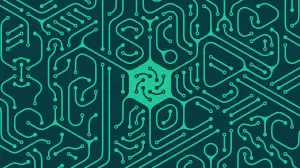Chalk Cravings Unveiled: Understanding the Curious Eating Disorder

- Understanding the Compulsion to Eat Chalk
- Symptoms and Diagnosis of Eating Chalk Disorder
- Potential Causes and Risk Factors
- Health Risks Associated with Eating Chalk
- Treatment Options for Eating Chalk Disorder
- Coping Strategies and Support for Individuals with Eating Chalk Disorder
- Prevention and Education to Raise Awareness about Eating Chalk Disorder
Eating chalk, a seemingly unusual behavior, has gained attention as a distinct eating disorder known as Pica or Eating Chalk Disorder. Pica is characterized by the persistent craving and consumption of non-food substances, such as chalk, dirt, or paper. While it may seem bizarre to some, this disorder affects individuals across various age groups and can have serious health consequences if left untreated. In this article, we will delve into the intricacies of Eating Chalk Disorder, exploring its causes, symptoms, potential risks, and available treatment options. By understanding this disorder better, we can promote awareness and support those affected in seeking help for a healthier lifestyle.
Understanding the Compulsion to Eat Chalk
The compulsion to eat chalk, also known as pica, is a puzzling eating disorder that involves consuming non-food substances. While the exact cause of this compulsion is still unclear, it is believed to be related to nutritional deficiencies or underlying psychological factors.
One theory suggests that individuals with pica may crave chalk due to an iron deficiency. Iron plays a crucial role in the production of hemoglobin, which carries oxygen throughout the body. When there is a deficiency in iron, the body may seek alternative sources of this essential mineral, leading to cravings for non-food items like chalk.
Another possible explanation for the compulsion to eat chalk is linked to psychological factors. Some experts believe that pica may be a manifestation of stress, anxiety, or obsessive-compulsive disorder (OCD). In these cases, individuals may find comfort or relief from their emotional distress by engaging in repetitive behaviors such as eating chalk.
It's important to note that not everyone who craves chalk has an underlying medical condition or psychological issue. Some individuals may develop this habit out of curiosity or imitation. In certain cultures, eating substances like clay or chalk is considered normal and even culturally significant.
Further research is needed to fully understand why some individuals develop a compulsion to eat chalk. By gaining a deeper understanding of the underlying factors contributing to this disorder, healthcare professionals can better assist those affected and provide appropriate treatment options.
Symptoms and Diagnosis of Eating Chalk Disorder
Symptoms of Eating Chalk Disorder can vary from person to person, but there are some common signs to look out for. These include a persistent craving for chalk or other non-food substances, such as clay or dirt. Individuals may also engage in secretive behavior, hiding their consumption of chalk from others. Physical symptoms can include dental problems, such as tooth decay or erosion, as well as gastrointestinal issues like constipation or stomach pain.
Diagnosing Eating Chalk Disorder can be challenging as it is a relatively rare condition and often goes unrecognized. Medical professionals typically rely on a thorough evaluation of the individual's symptoms and medical history. They may also conduct blood tests to check for any nutritional deficiencies or underlying medical conditions that could be contributing to the disorder.
It is important to note that the diagnosis of Eating Chalk Disorder should only be made by qualified healthcare professionals who specialize in eating disorders and mental health conditions. If you suspect that you or someone you know may have this disorder, it is crucial to seek professional help for an accurate diagnosis and appropriate treatment.
Potential Causes and Risk Factors
The exact cause of Eating Chalk Disorder, also known as pica, is not fully understood. However, there are several potential factors that may contribute to the development of this unusual eating disorder.
One possible cause is nutritional deficiencies. Individuals with pica often crave non-food items like chalk because their bodies are lacking certain essential nutrients such as iron or zinc. This craving may be a subconscious attempt to fulfill these nutritional needs.
Psychological factors can also play a role in the development of Eating Chalk Disorder. Stress, anxiety, and other mental health conditions may increase the likelihood of engaging in pica behaviors. Additionally, individuals who have experienced trauma or have a history of neglect may be more susceptible to developing this disorder.
Environmental factors can also influence the onset of pica. Individuals who are regularly exposed to chalk or similar substances may develop a taste for it over time. This exposure can occur in certain occupations or hobbies where chalk is commonly used.
Furthermore, cultural and social influences can contribute to the risk of developing Eating Chalk Disorder. In some cultures, eating non-food items may be seen as a normal behavior or even a form of traditional medicine. Peer pressure and societal norms can also influence an individual's desire to engage in pica behaviors.
It is important to note that each case of Eating Chalk Disorder is unique and may involve a combination of these potential causes and risk factors. Further research is needed to fully understand the complex interplay between these factors and the development of this disorder.
Health Risks Associated with Eating Chalk
While eating chalk may seem harmless, it can pose serious health risks. One immediate concern is the potential for choking or blockage in the digestive system, especially if large pieces are ingested. Additionally, chalk contains calcium carbonate, which is not intended for consumption and can disrupt the body's natural balance of minerals.
Long-term effects of consuming chalk include nutritional deficiencies, as it provides no essential nutrients and can interfere with the absorption of other important minerals like iron and zinc. Prolonged ingestion may lead to gastrointestinal issues such as constipation or diarrhea.
Furthermore, the chemicals used in the production of chalk may contain harmful substances like lead or mercury. These toxic elements can accumulate in the body over time and have detrimental effects on neurological development and overall health.
It is crucial to understand that eating chalk is not a safe or healthy habit. If you or someone you know has been engaging in this behavior, seeking professional help is essential to address any underlying issues and prevent further harm to physical well-being.
Treatment Options for Eating Chalk Disorder
Treatment options for Eating Chalk Disorder typically involve a multidisciplinary approach to address the underlying causes and provide support for individuals struggling with this condition. The primary goal of treatment is to help individuals overcome their compulsion to eat chalk and develop healthier coping mechanisms.
One common form of treatment is cognitive-behavioral therapy (CBT), which focuses on identifying and challenging negative thoughts and behaviors associated with the disorder. CBT can help individuals develop alternative strategies for managing stress and anxiety, reducing the urge to consume chalk.
In some cases, medication may be prescribed to address any underlying mental health conditions that may be contributing to the disorder, such as anxiety or obsessive-compulsive disorder. However, medication alone is not considered a standalone treatment for Eating Chalk Disorder.
Nutritional counseling may also be beneficial in helping individuals establish a balanced diet and address any nutritional deficiencies that may have resulted from consuming chalk. A registered dietitian can provide guidance on healthy eating habits and recommend appropriate supplements if necessary.
Support groups or individual therapy sessions can offer a safe space for individuals to share their experiences, gain support from others facing similar challenges, and learn additional coping strategies. Peer support can be invaluable in the recovery process.
It is important for individuals seeking treatment to consult with healthcare professionals who specialize in eating disorders or mental health. They can provide personalized recommendations based on an individual's specific needs and circumstances.
Remember, seeking professional help is crucial in overcoming Eating Chalk Disorder. With proper treatment and support, individuals can regain control over their eating habits and improve their overall well-being.
Coping Strategies and Support for Individuals with Eating Chalk Disorder
Coping strategies and support play a crucial role in helping individuals with Eating Chalk Disorder manage their condition. Firstly, it is important for those affected to seek professional help from healthcare providers specializing in eating disorders. These experts can provide guidance and develop personalized treatment plans tailored to the individual's needs.
Support groups can also be beneficial, as they offer a safe space for individuals to share their experiences, gain insight from others facing similar challenges, and receive emotional support. Connecting with others who understand their struggles can alleviate feelings of isolation and provide a sense of belonging.
In addition to professional help and support groups, individuals can employ various coping strategies. Developing healthy alternatives to chalk consumption, such as chewing gum or eating crunchy fruits and vegetables, can help redirect the compulsion towards safer options.
Engaging in stress-reducing activities like exercise, meditation, or hobbies can also be effective coping mechanisms. These activities not only distract individuals from cravings but also promote overall well-being.
It is essential for loved ones to offer understanding and non-judgmental support. Encouraging open communication about feelings and concerns helps foster a supportive environment that promotes recovery.
By implementing these coping strategies and seeking support from professionals and peers alike, individuals with Eating Chalk Disorder can improve their quality of life and work towards overcoming this disorder.
Prevention and Education to Raise Awareness about Eating Chalk Disorder
Prevention plays a crucial role in addressing eating chalk disorder. Educating individuals, especially young children, about the dangers of consuming non-food substances is essential. Schools and parents should emphasize the importance of proper nutrition and discourage any fascination with eating chalk or other non-edible items.
Healthcare professionals should be trained to recognize the signs and symptoms of eating chalk disorder, enabling early intervention. Public health campaigns can raise awareness about this disorder, dispelling misconceptions and providing information on its potential risks. By promoting understanding and empathy, we can reduce stigma surrounding this condition and encourage affected individuals to seek help.
Furthermore, it is important to establish support groups and counseling services for those struggling with eating chalk disorder. These resources can provide a safe space for individuals to share their experiences, gain insight into their compulsion, and learn coping strategies.
In conclusion, prevention efforts should focus on educating individuals about the dangers associated with eating chalk. By raising awareness, providing support, and promoting a healthy lifestyle, we can work towards reducing the prevalence of this curious eating disorder.
If you or someone you know is struggling with the compulsion to eat chalk, it is crucial to seek help from a healthcare professional. Eating chalk disorder can have severe health consequences and should not be taken lightly.
Treatment options for eating chalk disorder may include therapy, counseling, and medication. Cognitive-behavioral therapy can help individuals understand and manage their cravings, while medication may be prescribed to address any underlying mental health conditions.
In addition to seeking professional help, it is important to promote a healthy lifestyle. This includes adopting a balanced diet rich in essential nutrients and minerals that the body needs. Regular exercise and stress management techniques can also contribute to overall well-being.
Raising awareness about eating chalk disorder is vital in order to prevent its occurrence and provide support for those affected. Education programs should be implemented in schools and communities to inform individuals about the risks associated with this disorder.
Remember, seeking help is not a sign of weakness but a courageous step towards recovery. With proper treatment, support, and a commitment to living a healthy lifestyle, individuals with eating chalk disorder can regain control over their lives and achieve optimal well-being.
Published: 16. 02. 2024
Category: Health



